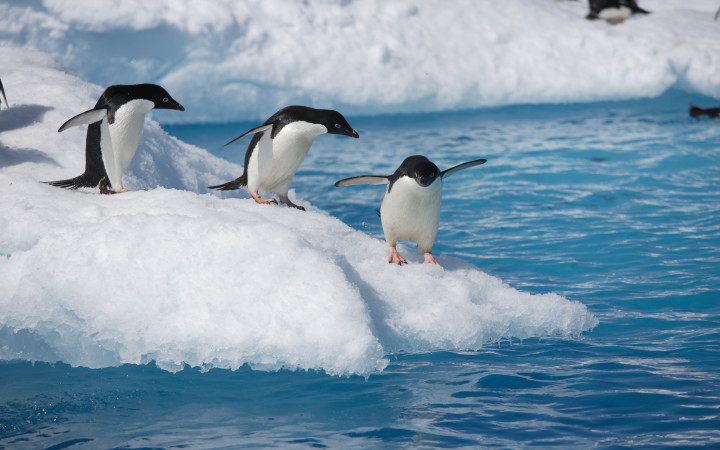Today’s Wonder of the Day was inspired by Ian from Orlando. Ian Wonders, “When will antartica melt” Thanks for WONDERing with us, Ian!
It’s cold. It’s icy. It’s home to penguins, blue whales, and albatrosses. And, of course, it’s one of the seven continents of the world. That’s right! Today’s Wonder of the Day is all about Antarctica.
For centuries, Antarctica has captivated people around the world. Explorers sought to travel there—and crossed treacherous waters full of ice to do so. Scientists have studied weather, wildlife, and geology there for decades. Today, many experts are sharing what the world’s coldest continent can teach us about climate change.
On average, Antarctica’s ice sheet is about 1.5 miles (2.4 kilometers) thick. In different areas, the ice is as thick as three miles (4.8 km) or as thin as one mile (1.6 km). The ice of Antarctica is the result of thousands of years of compacted snow. In the last few decades, though, scientists have reported that the ice is melting.
How quickly is Antarctica melting? That’s a difficult question to answer. The loss of ice in Antarctica has not been linear. That means it isn’t a steady decrease. In fact, the rate of melting can vary greatly from year to year. Still, scientists warn that the continent’s ice sheet is shrinking.
Experts say the melting of Antarctica’s ice sheet is caused by rising temperatures around the globe. Climate change is warming the world’s oceans and affecting the currents of the Earth’s oceans. These currents are bringing more warm water to Antarctica than ever recorded.
West Antarctica is the region most affected by these warm waters. Much of it sits below sea level. This puts it at an increased risk from the warming ocean. Warm seawater flowing beneath the area is also speeding up the melting process. Many experts are especially concerned about West Antarctica’s Thwaites Glacier. It is melting at an alarming rate.
Maybe you’re WONDERing why all of this matters. After all, most people live far away from Antarctica’s melting glaciers. However, as scientists warn, changes on any continent can affect the rest of the world. In fact, the melting ice in Antarctica could have an enormous global impact.
Today, the planet is warming at a rate that alarms scientists. If this continues, melting ice in Antarctica could lead to a drastic rise in sea level. Depending on human actions to curb climate change, this could have varied results. Antarctica’s melting ice sheet could cause the seas to rise between three and six inches by 2100.
That may not sound like much. However, the effects of such a rise could cause major problems. It will increase flooding, especially in areas near the shore. A large rise in sea level could even make some regions uninhabitable. This could cause millions around the world to become climate refugees.
Can humans stop Antarctica from melting? Probably not—but experts do believe people can slow the process. Currently, 192 nations and the European Union are part of the Paris Agreement, which seeks to lower global carbon emissions. Its goal is to limit global warming to between 1.5 and 2°C until the end of the 21st century..
If nations meet this goal, it will slow the melting of the Antarctic ice sheet. How can you help? Pay attention to your carbon footprint. Talk with your family about ways to reduce your use of fossil fuels. And, perhaps most importantly, reach out to your elected representatives. Only changes on a large, global scale can truly make a difference for Antarctica.
Standards: NGSS.ESS2.A, NGSS.ESS2.C, NGSS.ESS2.D, NGSS.ESS2.E, NGSS.ESS3.C, NGSS.ESS3.D, CCRA.R.4, CCRA.R.10, CCRA.L.3, CCRA.L.6, CCRA.R.10, CCRA.R.1, CCRA.SL.1, CCRA.L.1, CCRA.W.2, CCRA.SL.3, CCRA.L.2, CCRA.SL.2, NCAS.A.1, NCAS.A.2, NCAS.A.3




